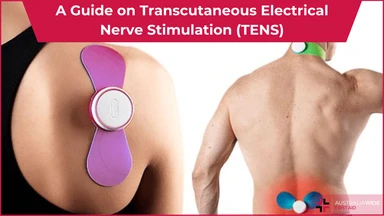Child Safety – 4 Important Things to Know


Over 68,000 children aged 0 to 14 years are rushed to the hospital for serious injuries each year, with more than 150 of those hospitalisations ending in death.
As a parent, the safety of your child should always be your top priority. According to the Child Accident Prevention Foundation of Australia, more Australian children die of injuries each year than of cancer and asthma combined.
With such sobering statistics, there is no better time than now for you to learn all that you can about child safety. By doing so, you arm yourself not only with the knowledge that will help you keep your child healthy and safe, but also with the skills necessary to address emergencies that could involve your child and other people around you.
To help you in this regard, we provide you this list of the important things to know about child safety in Australia.
Knowing how to properly administer first aid if your child gets injured can be a significant factor in preserving their life. However, you should be aware that there is a specific type of first aid that is meant to treat injuries in young children. A child’s body is more fragile than that of an adult’s, and as such, using first aid techniques meant for an adult on a child could only do more harm than good.
To avoid this, make sure to get formal training in child care first aid from a nationally recognised and accredited first aid training organisation such as Australia Wide First Aid. This will ensure that you’ll learn the right skills and knowledge in treating injuries in children.
Always exercise maximum care whenever you take your child anywhere in your car or whenever you’re walking with them near roads. This is because in Australia, the most common cause of injury-related deaths in children is “road trauma” or those that have to do with transport-related injuries.
Road trauma can happen in a variety of ways: from a child being thrown inside a moving car due to them not wearing safety restraints at the time of the accident, to them being locked inside a car during a hot day. Many children also get struck by oncoming traffic after accidentally venturing out on the road on their bike or scooter.
Such scenarios can be easily prevented when one follows these common sense road safety practices:
Does your home have a lot of high places that your child could potentially fall from? If you have stairs, balconies, or even tall furniture in your home, then your child is definitely at risk. Consider installing safeguards to prevent your child from gaining access to these heights and injuring themselves. Fall injuries are the single largest class of injuries that occur among Australian children, with head injuries and skull fractures being the most common result.
Protect your child from falls by installing safety gates and guard rails on your stairs and balconies. Also place soft material at the foot of tall furniture and baby play equipment to cushion any potential falls. Most importantly, do not leave your child unattended for any length of time around potential fall hazards.
We’ve all been brought up with the belief that there’s no safer place for us to be in than at home. However, this may not be necessarily true for children, as according to the Child Accident Prevention Foundation of Australia, the home is the most common place for them to experience injury. Therefore, you should make your home kid-safe by implementing the following basic safety measures. These steps are prefaced with the type of child injury risk they mitigate.
This is by no means an exhaustive list of safety measures, and indeed, more can be found at the Child Accident Prevention Foundation of Australia’s website. However, adhering to these can certainly make your home significantly safer for your child.
Part of being a caring parent for your child is to be responsible for their safety, especially during their younger years, when they are most vulnerable.
Take the above information to heart, and you’ll be able to ensure your child’s safety and well-being for the foreseeable future.

March 25, 2025
Explore non-traditional paths to sobriety, including mindfulness, yoga, nutritional therapy, and community-based support, for a personalized approach to recovery.

September 7, 2022
Menopause is the final period, when a woman, trans man, or non-binary person assigned female at birth's ovaries run out of eggs and the body can no longer ovulate. Menopause comes with several symptoms, complications, and treatment options.

July 26, 2024
Transcutaneous Electrical Nerve Stimulation (TENS) is a therapeutic method of pain relief. It utilises an electrical device that emits electrical currents and streams the impulses via electrode patches attached to the skin.